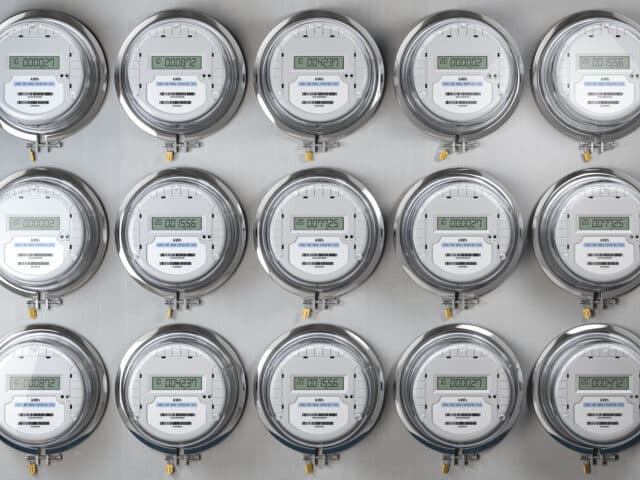Your electric meter operates continuously, measuring the electricity your home consumes, enabling your utility company to bill you for the energy used. While many are familiar with the appearance of an electric meter, how much do you truly understand about it? Do you know its functioning, how it gauges your usage, and how it is read? Is it analog, digital, or smart? Can it slow down or even run in reverse with home solar power? In this comprehensive guide, we delve into the inner workings of an electric meter, its functions, how to interpret its readings, and more.
Why is it essential to comprehend your electric meter?
Let’s begin with a fundamental question: What exactly is an electric meter? In simple terms, an electric meter, also known as an electricity meter, electrical meter, or energy meter, is a device designed to measure the amount of electricity consumed by a building.
The type of electric meter in your home significantly influences how your utility company bills you for your power consumption. For instance, if you have an older analog meter, the utility company only has knowledge of your electricity usage between two consecutive readings, which necessitates sending a worker to record the readings. Consequently, the utility lacks insights into your specific time-based electricity consumption patterns. Hence, they bill you using a single rate for all the electricity you consume.
On the other hand, a more modern smart meter provides your utility company with real-time data on your electricity consumption and its timing. If you have a smart meter, your utility can gain valuable insights into your power usage habits, potentially leading to changes in their billing methods.
These alternative billing rates that utilities can employ with smart meters include:
- Time-of-Use Rates: The cost of electricity varies based on the time of day when you use it.
- Demand Charge Rates: Billing is based on the highest amount of energy drawn from the grid at any given moment.
Your power expenses may fluctuate depending on the rate structure your utility adopts and your usage habits. The advantage is that increased data collection by your utility can be shared with you, helping you better understand your consumption and its impact on your monthly bill.
Furthermore, the type of meter you possess can impact the ease of installing solar power systems. If you have a smart meter, solar installers can gather detailed information about your consumption to tailor a system to your needs. Depending on your utility, you may not need to replace your meter when transitioning to solar if you already have a smart meter.
Who owns the electric meter?
It might come as a surprise, but your home’s energy meter is not your property; it belongs to your utility company. They are responsible for its installation, maintenance, and readings. Tampering with a residential power meter is unauthorized and can result in severe consequences, not to mention potential dangers.
If you require changes, relocation, or adjustments to your meter, you must collaborate with your utility to have the work done.
How does an electric meter work?
Have you ever wondered how your electric meter calculates your energy consumption as you observe the spinning numbers? In the case of an analog meter, a rotating disc spins multiple measurement dials as you draw kilowatt-hours (kWh) of electricity from the grid, resulting in a new reading. The difference between the current reading and the previous one helps your utility company determine your energy usage and billing amount.
If you have an older meter, you may have noticed utility workers visiting your home monthly to record readings. In contrast, with a smart meter, there’s no need for physical visits because it communicates directly with your utility, transmitting your current usage details.
Some smart meters use cellular signals, while others emit radio waves, with utility workers driving through neighborhoods to collect readings. Radio wave-enabled smart meters facilitate data collection without home visits but lack direct communication with the utility, unlike cellular smart meters.
When you install a solar power system, your utility may require replacing your old meter with a new one. In areas with net metering, the new meter monitors both energy drawn from and fed back into the grid, helping determine your overall energy usage.

How An Analog Electric Meter Works
Analog meters, found in most homes without smart meters, are mechanical devices enclosed in glass or plastic housing to prevent tampering. Inside, a metal disc rotates as electricity is drawn from the utility’s service wires. Notably, the disc spins slower during periods of low electricity consumption and faster during peak usage.
These meters consist of two conductor coils generating magnetic fields. One coil responds to voltage, and the other to current. The interaction of these fields causes a thin aluminum disc to rotate at a speed proportional to the electricity consumed. This rotation moves the dials, indicating the total kilowatt-hours consumed. A utility worker must visit to read and record the current readings for billing. You can also read the meter yourself to track your electricity consumption and ensure accurate charges.
How To Read A Mechanical Electric Meter
Reading an electricity meter is straightforward if you know what to look for. When reading your meter, note the numbers on the dials from right to left. If a pointer directly points to a number, check the dial to the right. If it has passed zero, use the higher number; otherwise, use the lower one. When the pointer falls between two numbers, select the smaller one.
Remember that your electricity meter doesn’t reset, so you should take readings at different times to understand your consumption over time.
How A Digital Electric Meter Works
Digital electric meters come in various types. The older versions are similar to mechanical meters, measuring electrical flow and converting readings to digital signals using an analog-to-digital converter (ADC).
Modern digital meters incorporate alternating current (AC) sensors, detecting amperage and voltage from the grid more accurately than ADC or mechanical meters. They display readings electronically, which can be read manually and accessed by the utility company through high-frequency signals.
For those with solar power systems participating in net metering, digital meters record both usage and energy sent back to the grid, aiding in determining overall energy usage for billing.
What units does an electric meter measure?
An electric meter installed in your home measures electricity in watts. To understand what an electricity meter measures, it’s crucial to recognize that a watt is the product of voltage and amperage (current) in an electrical circuit: 1 watt = 1 volt x 1 amp. However, this formula represents electrical potential, requiring the element of time to measure actual energy usage.
Thus, residential electrical usage is measured in kilowatt-hours (kWh), which signifies 1,000 watts of electricity used over 1 hour. For instance, if you leave a 60-watt light bulb on for 24 hours, energy usage is calculated as follows:
60 watts x 24 hours = 1,440 watt-hours (1.44 kilowatt-hours)
If you want to delve deeper into understanding electricity terms like volts, amps, and watts, refer to a comprehensive guide on the topic.
How accurate is an electric meter?
Electric meters are designed to record electricity consumption within an acceptable level of accuracy. Significant errors affect both consumers and utility companies, potentially leading to overbilling or supplier losses. The required accuracy level is determined by local laws and regulations, outlining procedures to follow in case of meter accuracy disputes.
In the United States, the American National Standards Institute (ANSI) has established voluntary standards that form the basis of testing requirements for most utilities and utility commissions. Meters are categorized into accuracy classes of 0.1, 0.2, and 0.5, indicating error rates under test
Where to buy an electric meter?
“Need Separate Electric Meters for RV Park or Multi-Family Housing? Explore Outdoorsiness.com for the Best Options!”






